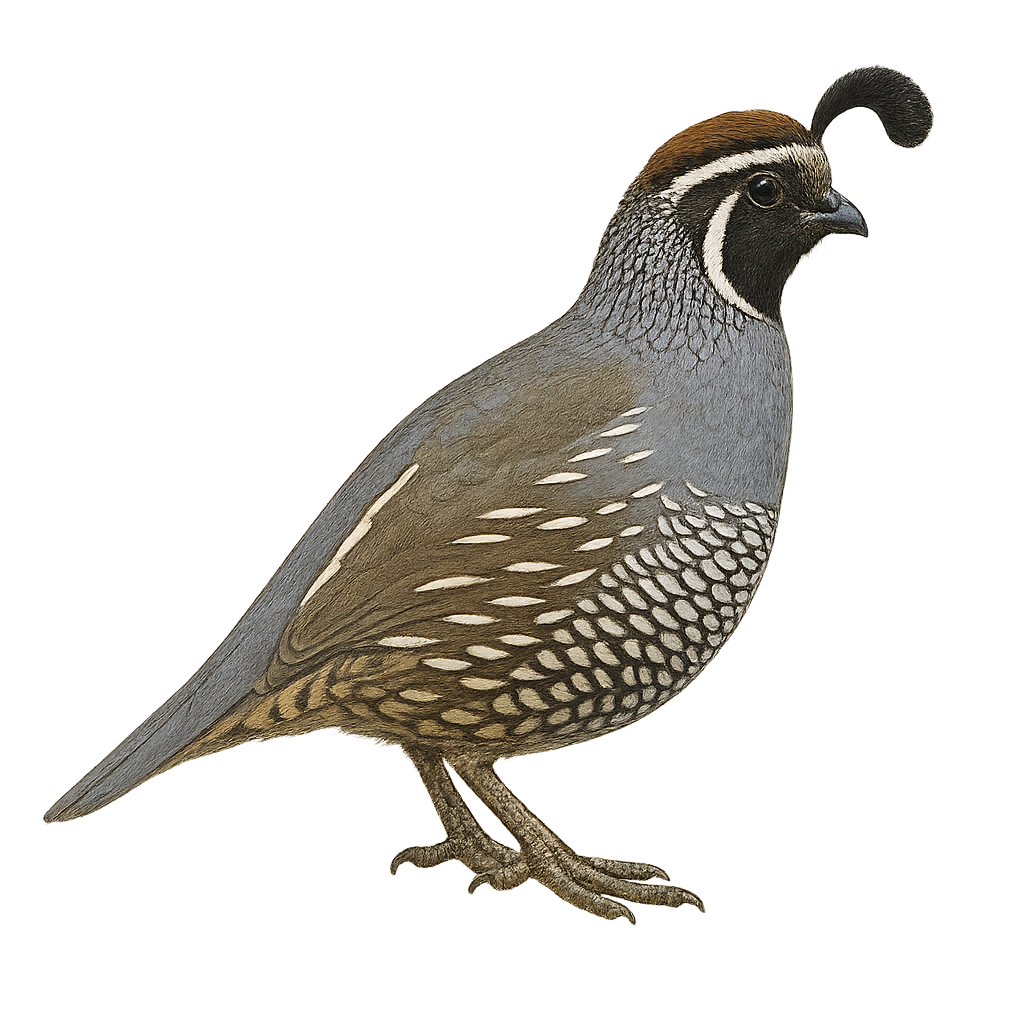Your wildlife photography guide.
Explore the california quail in detail, study its behavior, prepare your shots.
Where to observe and photograph the california quail in the wild
Learn where and when to spot the california quail in the wild, how to identify the species based on distinctive features, and what natural environments it inhabits. The WildlifePhotographer app offers tailored photography tips that reflect the california quail’s behavior, helping you capture better wildlife images. Explore the full species profile for key information including description, habitat, active periods, and approach techniques.
California Quail
Scientific name: Callipepla californica

IUCN Status: Least Concern
Family: ODONTOPHORIDAE
Group: Birds
Sensitivity to human approach: Suspicious
Minimum approach distance: 10 m
Courtship display: April to June
Incubation: 22-23 jours
Hatchings: April to July
Habitat:
Scrublands, open forests, grasslands
Activity period :
Primarily active during the day, with peak activity in the morning and late afternoon.
Identification and description:
The California Quail, Callipepla californica, is a charming and distinctive bird, easily recognized by its teardrop-shaped plume adorning its head. This bird is primarily found in the western United States, particularly in California, where it inhabits scrublands, open forests, and grasslands. The quail's plumage is a blend of gray, brown, and white, with scaled patterns on the belly. Males are generally more colorful than females. Sociable by nature, it often lives in groups called "coveys," especially outside the breeding season. The California Quail feeds mainly on seeds, leaves, and insects. It is known for its distinctive and melodious calls, often heard at dusk.
Recommended lens:
400mm – adjust based on distance, desired framing (portrait or habitat), and approach conditions.
Photography tips:
To photograph the California Quail, it is advisable to use a telephoto lens of at least 400mm to capture detailed images without disturbing the bird. Look for areas where these birds gather, such as the edges of grasslands or clearings. Be patient and discreet, as although they are sociable, they can be suspicious. The best times to photograph them are early in the morning or late in the afternoon when the light is soft and the birds are active. Use a tripod to stabilize your camera and achieve sharp images.
The WildlifePhotographer App is coming soon!
Be the first to explore the best nature spots, track rutting seasons, log your observations, and observe more wildlife.
Already 1 441 wildlife lovers subscribed worldwide

